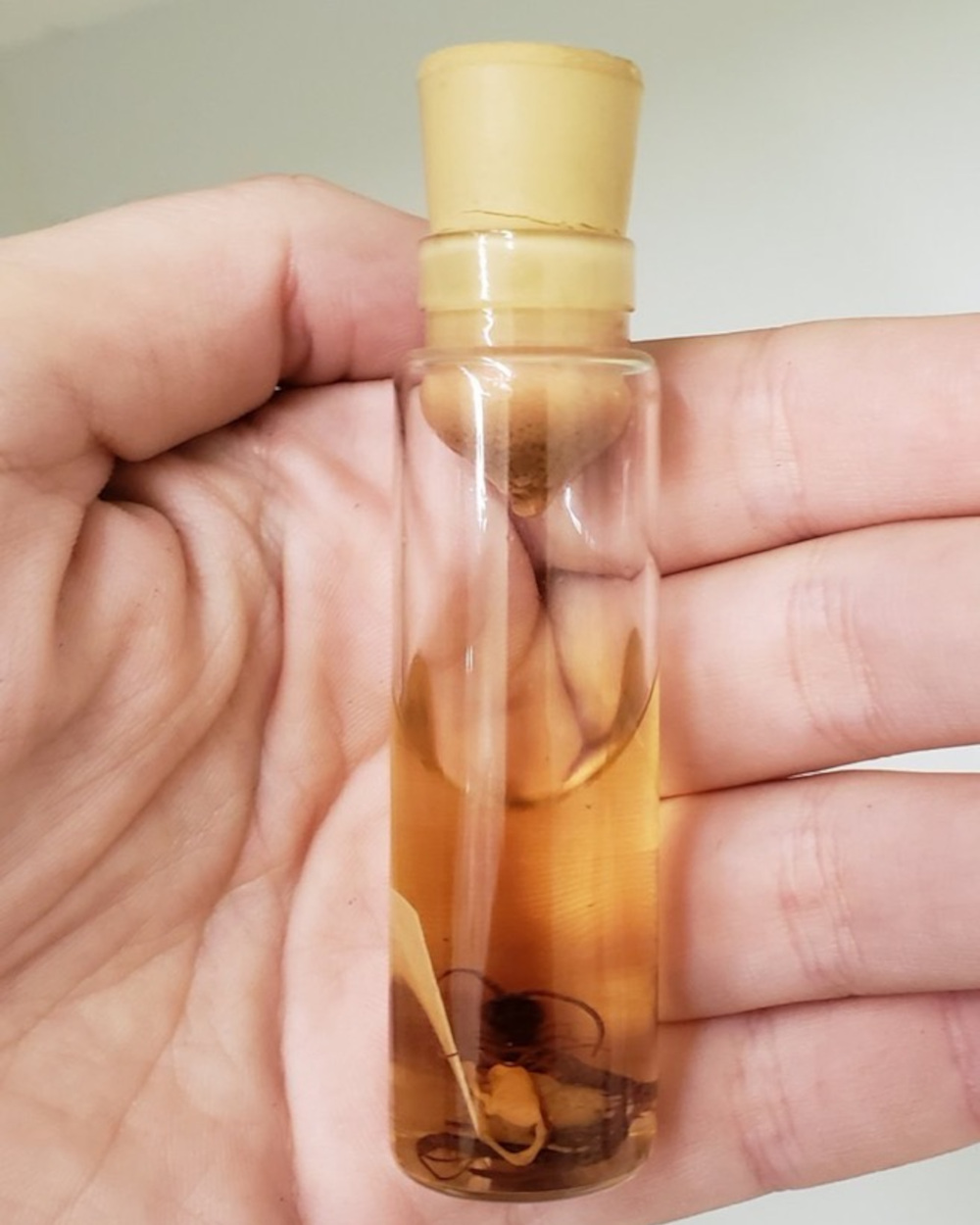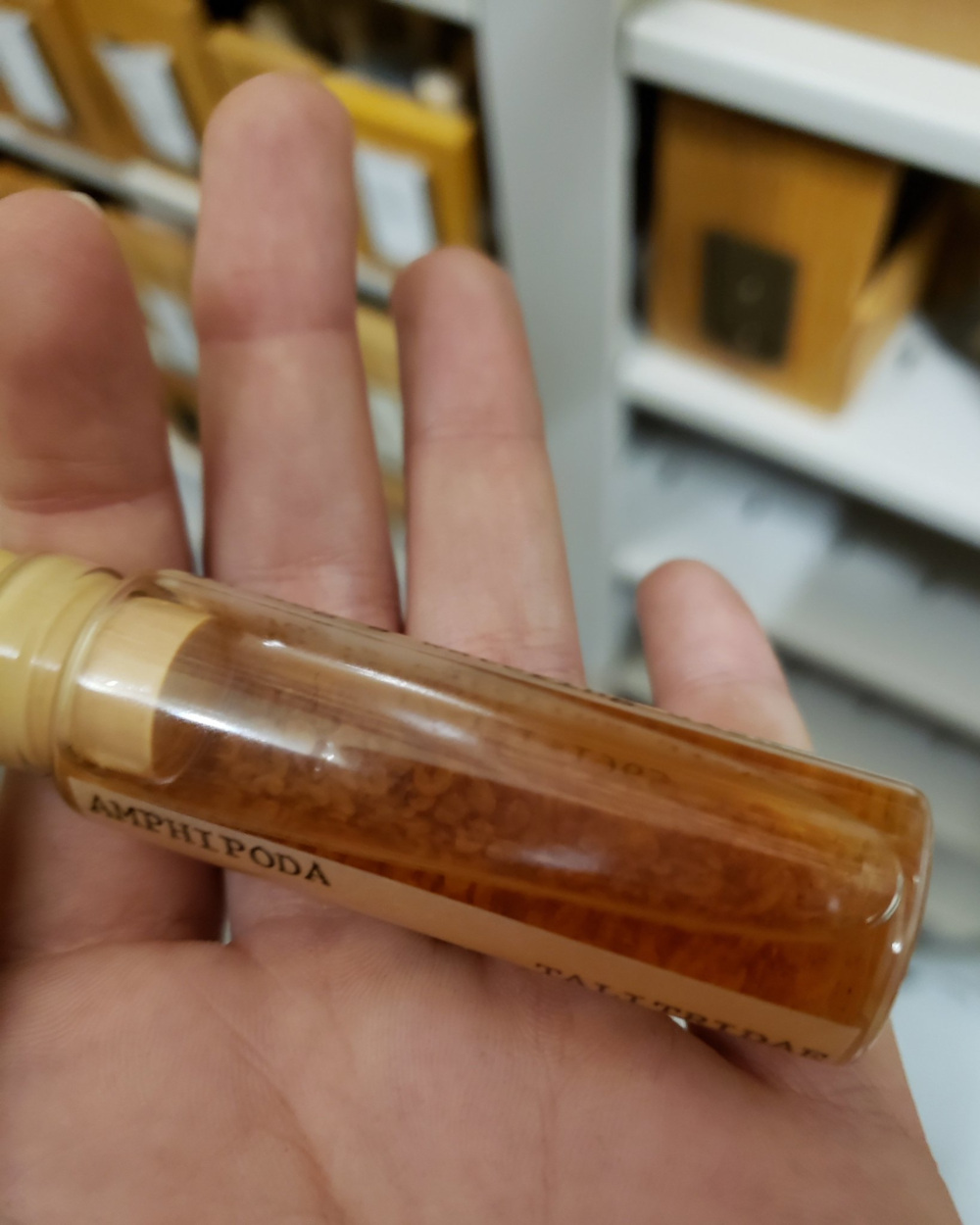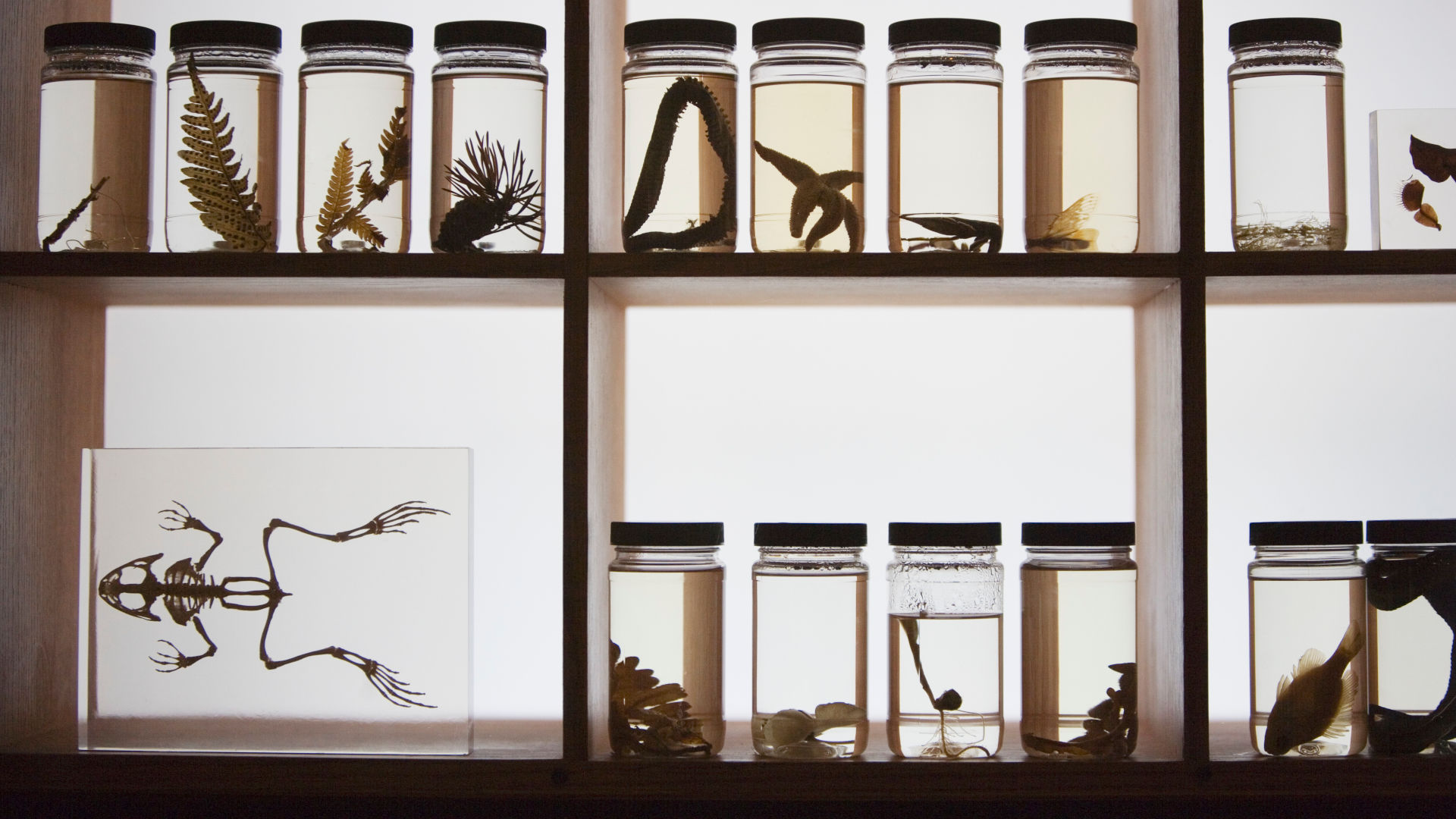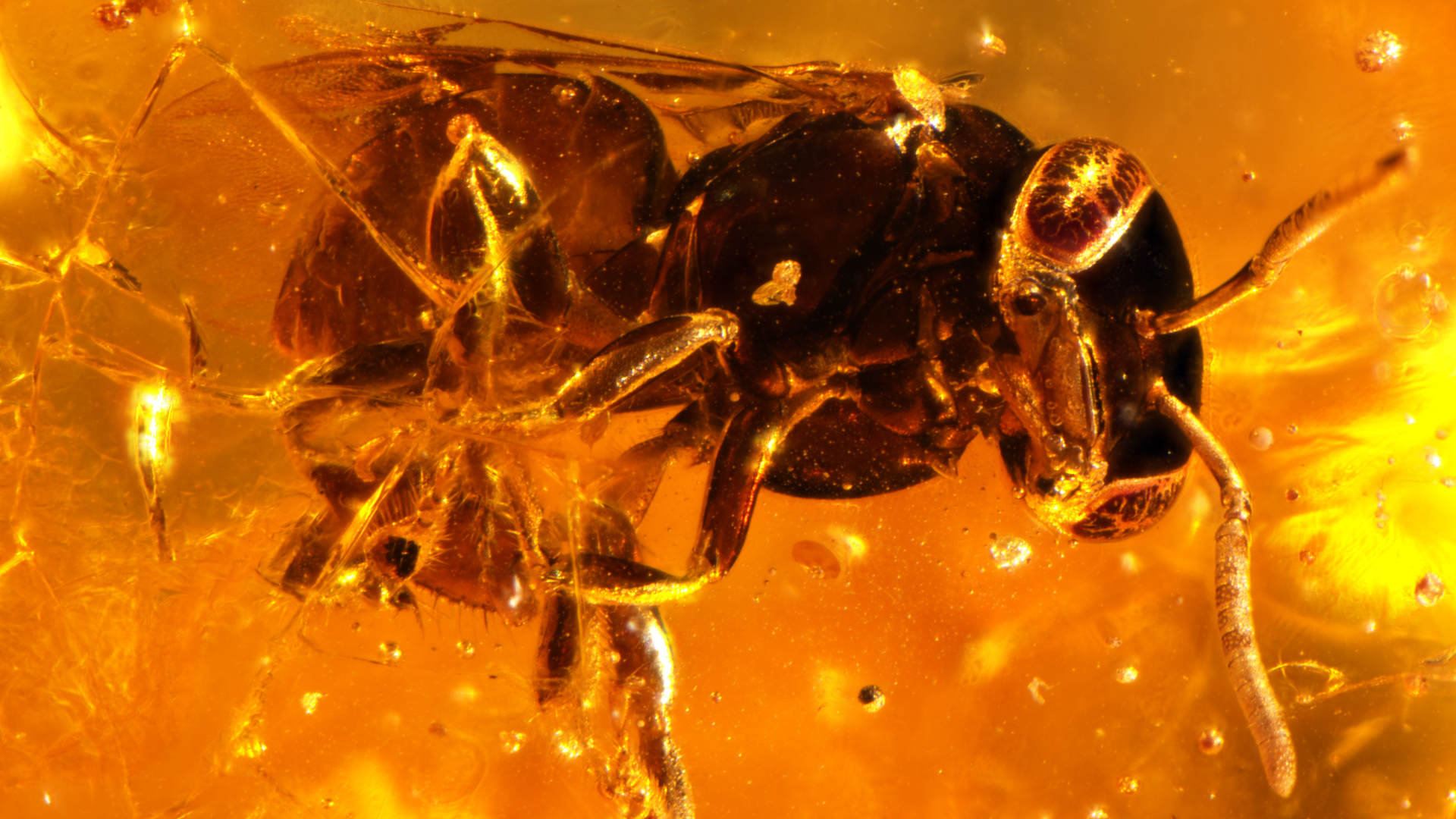Neglect of a Museum’s Collection Could Cause Scientific Setbacks
In a dusty room in central Florida, countless millipedes, centipedes, and other creepy-crawlies sit in specimen jars, rotting. The invertebrates are part of the Florida State Collection of Arthropods in Gainesville, which totals more than 12 million insects and other arthropod specimens, and are used by expert curators to identify pest species that threaten Florida’s native and agricultural plants.
However, not all specimens at the facility are treated equally, according to two people who have seen the collection firsthand. They say non-insect samples, like shrimp and millipedes, that are stored in ethanol have been neglected to the point of being irreversibly damaged or lost completely.
When it comes to how the FSCA stacks up with other collections she’s worked in, Ann Dunn, a former curatorial assistant, is blunt: “This is the worst I’ve ever seen.”
Experts say the loss of such specimens — even uncharismatic ones such as centipedes — is a setback for science. Particularly invaluable are holotypes, which are the example specimens that determine the description for an entire species. In fact, the variety of holotypes a collection has is often more important than its size, since those specimens are actively used for research, said Ainsley Seago, an associate curator of invertebrate zoology at the Carnegie Museum of Natural History in Pittsburgh.
A paper published in March 2023 highlighted the importance of museum specimens more generally, for addressing urgent issues like climate change and wildlife conservation, with 73 of the world’s largest natural history museums estimating their total collections to exceed 1.1 billion specimens. “This global collection,” the authors write, “is the physical basis for our understanding of the natural world and our place in it.”
Through Aaron Keller, the communications director of the Florida Department of Agriculture and Consumer Services — which oversees the FSCA — the museum declined to speak with Undark for this story. In response to a complaint that Dunn filed with the FDACS Office of Inspector General, the director of the museum’s parent agency Trevor Smith wrote: “scientific specimens do not need to be pristine or perfect specimens” and “museum staff strive to maintain materials in the best condition possible because they cannot be replaced.”
Dunn started working at the Florida State Collection of Arthropods in April 2022 as an assistant to curator Felipe Soto-Adames. She was initially hired, she told Undark in a recent interview, in part to help maintain part of the FSCA’s collection — some of the so-called wet specimens, or invertebrates stored in vials and jars filled with alcohol. But she said she was shocked when she saw the condition of many of the specimens that were supposed to be under her care. (The FSCA did not respond to a request for comment on Dunn’s hiring or specifics about her role, nor did the museum respond to multiple requests for an interview with Soto-Adames.)
Dunn told Undark that she found mushy specimens sitting in brown ethanol, some with stoppers so eroded that they were dripping a waxy substance onto the contents of the vial. Most of the damage is in the collection of non-insect arthropods, like sun spiders, millipedes, and shrimp. She estimates that half of the FSCA’s ethanol collection, which included 200,000 vials and approximately 1.1 million individual arthropods as of 2022, is damaged or rotten. Another person who is familiar with the FSCA collections agreed with Dunn’s assessment. (They asked to remain anonymous, citing fear of retaliation.)
The FSCA was founded in 1915 to house the collection of the Florida State Plant Board (now the Division of Plant Industry), and merged with other state collections in the 1960s after the Florida Department of Agriculture and Consumer Services formally took it over. Today, the FSCA seeks “to build the best possible worldwide collection of terrestrial and aquatic arthropods in support of research, education and the functions of the Florida Department of Agriculture and Consumer Services,” according to its website.


The state of the collection, Dunn said, prevented her from fulfilling the FSCA’s mission of identifying pest species. When people asked the museum for help identifying lawn shrimp — terrestrial crustaceans that are invasive in Florida — Dunn had to rely on Google Images. “I knew from experience that the collection would not help me at all,” she said, due to a lack of organization and degradation of specimens.
Maintaining such a vast collection isn’t easy, particularly when it comes to specimens preserved in alcohol. While a few institutions have well-managed alcohol collections, many others do not, said Seago of the Carnegie Museum of Natural History. (Seago is also president of the Entomological Collections Network, a nonprofit that provides best practices for insect and other arthropod collections.) She demonstrated one such challenge in a Zoom interview, holding up jars of crabs that were bone dry — all the alcohol within had evaporated over time. While hard-bodied crabs can remain intact when desiccated, soft-bodied invertebrates fare worse. And evaporating alcohol can also degrade the stopper used to seal the specimen’s container, especially if it’s made of cork or rubber.
At the Carnegie Museum of Natural History, there are approximately 76,000 containers of ethanol specimens, mostly stored in a World War-II-era Quonset hut, which is made from corrugated steel and is uninsulated. According to Seago, replenishing the required ethanol of each sample takes a lot of work. Even if interns or volunteers are available to go through them all, supervisors have to oversee the process to ensure they’re using the correct alcohol concentration and understand how the specimens should be properly organized.
“Just keeping an alcohol collection at baseline ‘okay’ is a monumental amount of effort,” Seago said.
According to Dunn, her work at the Florida State Collection of Arthropods came to a halt when her one-year contract was not renewed in April, just days after she posted negative comments about the workplace behavior of head curator Paul Skelley on her personal, anonymous Twitter account. Dunn had submitted a formal complaint against Skelley and the state of the ethanol collections to the FDACS Office of Inspector General on April 17. The inspector general’s office determined that Dunn’s complaint did not warrant an investigation, and in a written evaluation, they noted that Dunn was let go for “conduct unbecoming a public employee and insubordination associated with derogatory comments posted on social media.”
Following her firing, Dunn tweeted photographs of damaged specimens from the FSCA’s collection. Jackson Means, a millipede taxonomist at the Virginia Museum of Natural History, told Undark he had only seen similar conditions in an alcohol collection that had been left unattended in a warehouse for 22 years. “These images are definitely long-term neglect,” he said.
Some of the neglected specimens included holotypes, Dunn told Undark. The loss of holotypes can cause uproar among the scientific community, but they can be replaced — if someone goes through the effort of formally describing a neotype (a new holotype meant to replace one that has been lost or damaged). But designating a neotype “usually relies on other people being able to determine whether or not you can find a specimen of the same species from the same locality” as the holotype, said Seago. For many species, there aren’t enough experts to do that work, she said, “and the fewer taxonomists you have for that group, the less likely that is.”
Seago is currently applying for a grant to help locate, consolidate, and digitize holotype specimens at the Carnegie Museum of Natural History. And Means said the Virginia Museum of Natural History is working to catalogue its holotypes too. Dunn had been working on a similar organizational endeavor at the FSCA before her firing.
Many collectors, from scientists to hobbyists, donate their personal collections to museums. This was the case for Nell Causey, who had her millipede collection given to the FSCA after her death in 1979. Causey earned a Ph.D. from Duke University in 1940, and was “the predominant myriapodologist of her time,” said Means. “She was a really good collector, and she described a lot of species.”
During Dunn’s efforts to help catalogue the FSCA’s holotypes, she says she found eight of Causey’s millipedes sitting mislabeled on a shelf in the wrong building gathering dust. The samples had been described in 2010 by William Shear, a professor emeritus at Hampden-Sydney College in Virginia, who had borrowed the specimens several years prior for a research project. Neither Dunn nor her coworker on the project knew they existed before Shear reached out to check on them. (Shear told Undark that this snafu was caused by a lack of communication from the previous curator, and he has since borrowed and deposited specimens at the FSCA with no problems.)
Dunn is worried that the life’s work of Causey and other passionate collectors, like arachnid specialist Martin Muma, who died in 1989, is at risk of degradation at the FSCA, especially without dedicated taxonomists to care for them. It is a shame, Means told Undark, to lose parts of a prominent collector’s work. “Maybe art historians will be mad at me, but it’s a lot like the degradation of a painting,” he said. “You are losing a piece of history.”

Many museum curators have a preference or bias for the specific group they work on, said Seago, and will prioritize care for that group — especially if they’re in a collection where “the people in charge don’t care at all about those groups.” Meanwhile, taxonomists can be hard to come by, and she said this is even truer for small, obscure, and uncharismatic groups of organisms. Dunn said this taxonomic bias was strong at FSCA, which especially favors beetles. The person familiar with the museum’s collections who did not wish to be named agreed with Dunn that there is a persistent attitude of favoritism toward charismatic insects at FSCA.
Museum donors also usually have preferences for certain groups — Seago said she could easily raise funds for a new butterfly cabinet — but natural history museums need more money if they’re going to adequately care for their entire collections. That hasn’t always been the case even for more popular creatures. “Funding has been dropping across the board,” said Means. “And because of that, staffing is down.”
Dunn accepts the commonality of neglect in ethanol collections, but said “that doesn’t make it acceptable.” And when it comes to holotypes, she said, there’s no excuse. “Holotypes should never go without care.”
Means and Seago agreed. “The whole point of a museum,” said Means, is to take care of type specimens “in perpetuity.”
Darren Incorvaia is a journalist who writes about animals and the natural world. His work has appeared in The New York Times, Scientific American, and Science News, among other publications. He holds a Ph.D. in Ecology, Evolution, and Behavior from Michigan State University.












Comments are automatically closed one year after article publication. Archived comments are below.
This is so unacceptable. Thank you for reporting this. I’m hoping Dunn’s passion is recognized, and she has better opportunities than this in the future. The FSCA should be ashamed.
This is so incredibly infuriating. This kind of scientific knowledge loss at the hands of personal preference???